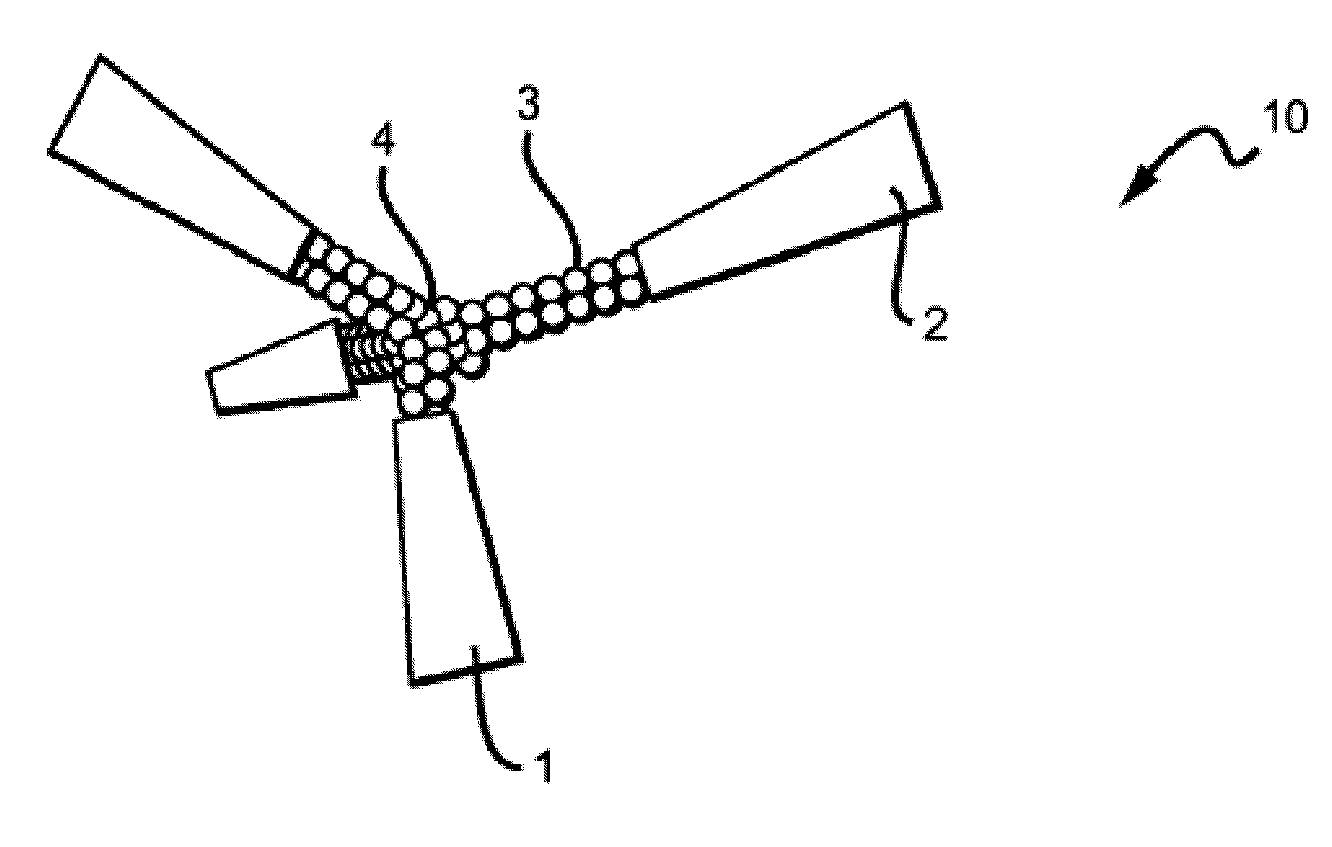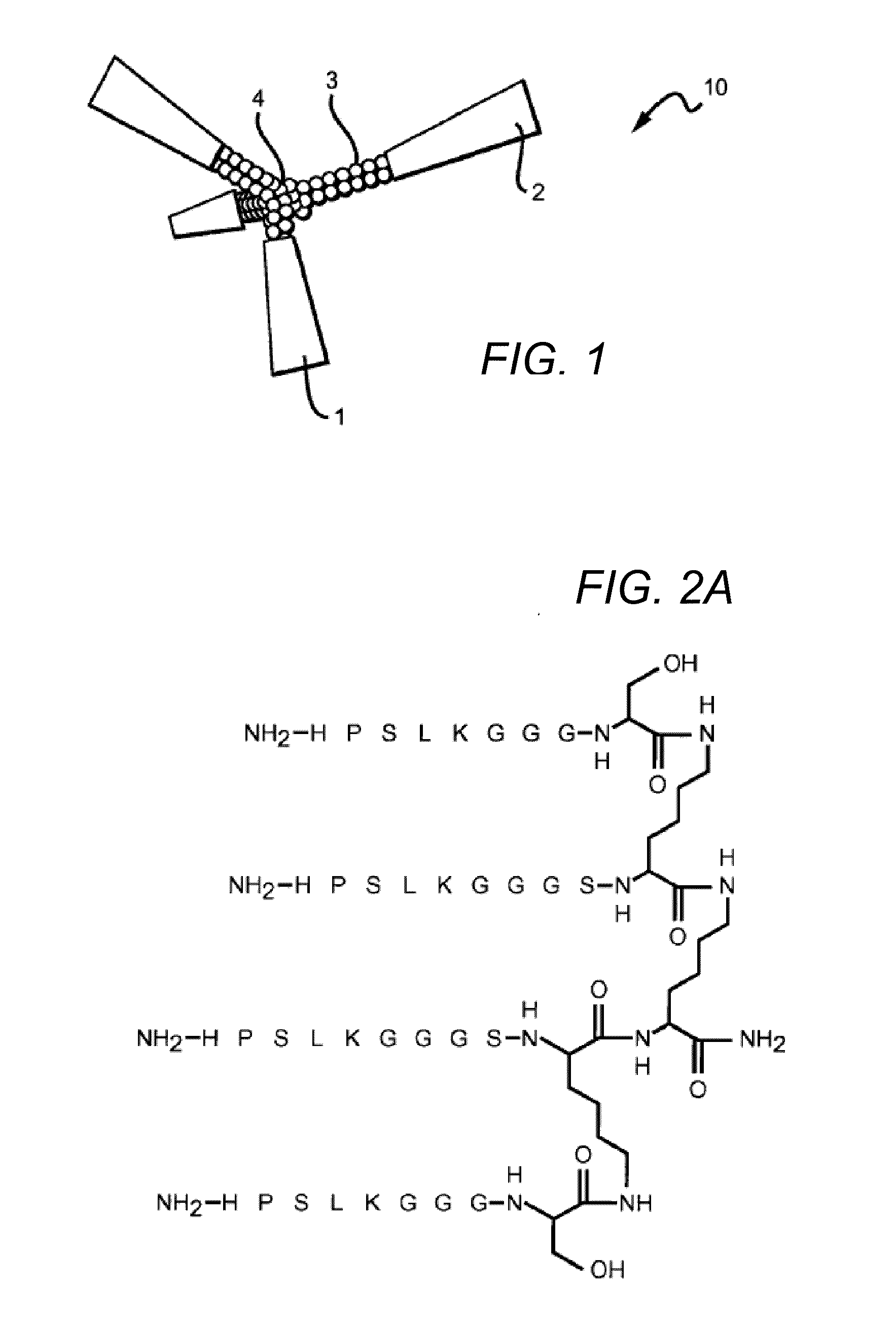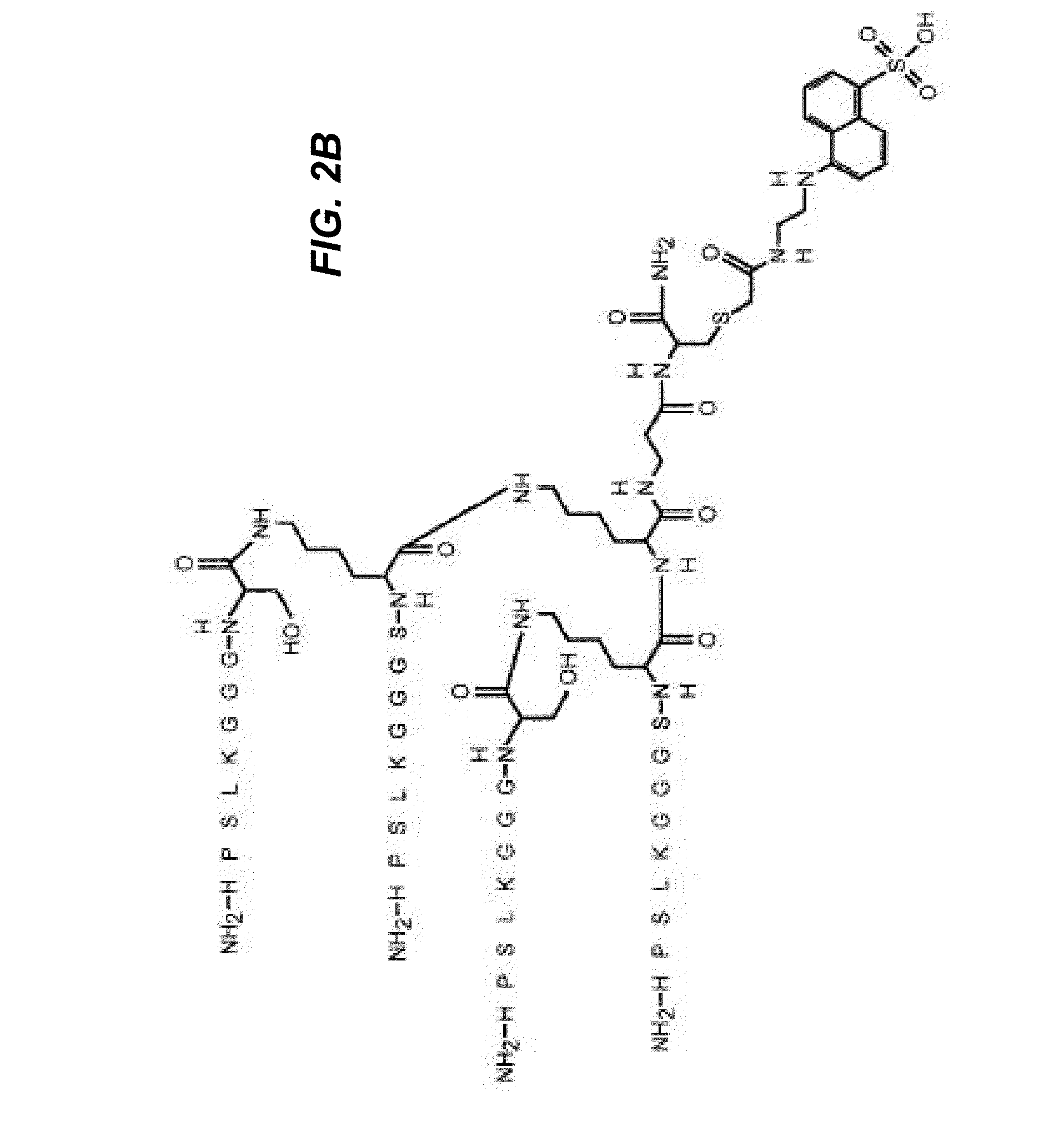Therapeutic peptides and uses thereof
a technology of peptides and peptides, applied in the field of therapeutic peptides, can solve the problems of increasing the cost burden beyond, the cost of current treatment, and the enormous cost of treating this disease, and achieve the effects of enhancing antibody-mediated cytotoxity or phagocytosis, and enhancing passive immune protection
- Summary
- Abstract
- Description
- Claims
- Application Information
AI Technical Summary
Benefits of technology
Problems solved by technology
Method used
Image
Examples
example 1
Peptide Design and Synthesis
[0110]Unique peptide sequences were designed by molecular modeling of docking to sugar-binding sites of lectins, downloaded from the Protein Data Bank (PDB), with ArgusLab 4.0.1 software (Mark A. Thompson, Planaria Software LLC, Seattle, Wash., http: / / www.arguslab.com). The corresponding peptides were synthesized by solid-phase methods using standard Fmoc side chain protection. Branched peptides were constructed on a central tri-lysine framework (Tam JP. 1996. Recent advances in multiple antigen peptides. Journal of Immunological Methods 196:17-32), which allows four identical sequences within the same structure. A linker, (GGGS, SEQ ID NO:9), was included to distance the core sequence from the central framework. Distances between the core sequences can be adjusted by decreasing or increasing the length of the linker, by including, without limitation, two linkers in tandem (GGGSGGGS, SEQ ID NO:10), or by inserting any suitable inert linker, including, wit...
example 2
Lectin Binding
[0128]Four different assays were performed to demonstrate the binding affinity of the peptide constructs to various lectin proteins. Each assay used the same basic procedure. For lectins available as peroxidase conjugates, biotin-tagged peptides were added to streptavidin-coated wells of a microtiter plate (binding capacity, 125 pmoles per well, Pierce) and incubated 1 hr at room temperature. The wells were washed, blocked with 1% gelatin in 50 mM Tris-HCl (pH 7.5) containing 150 mM NaCl, 1 mM CaCl2, 1 mM MgCl2 and 1 mM MnCl2 (buffer A) and washed two times with buffer A. Then 50 μL of 1 μg / mL horseradish peroxidase-conjugated lectins (Sigma-Aldrich, St. Louis, Mo.) in buffer A were added. After 1 hr incubation, wells were washed 4 times with buffer A and then 50 μL of peroxidase substrate (1-Step Ultra TMB-ELISA, Pierce) were added. Two to 10 min later the reaction was stopped with 50 μL 2 M H2SO4 and absorbance was read immediately at 450 nm. The amount of lectin bou...
example 3
Stimulation of Phagocytosis by Peptides
[0133]The ability of the peptide constructs to stimulate phagocytosis was assessed in two experiments. In the first experiment, a biotin-tagged peptide epitope of a surface protein of HIV-1 was bound to streptvidin on the surface of the beads. An antibody preparation that was raised against this epitope was then bound to the HIV peptide. The beads were then washed and presented to peripheral blood mononuclear cell (PBMC) cultures pretreated with peptides. FIGS. 8A-B show that macrophages in cultures not treated with peptides had little, if any, phagocytic activity. In multiple control cultures, the number of beads within a macrophage-like cell ranged from 0 to 3. FIGS. 8C-D show cells treated with therapeutic peptide constructs containing four copies of the core sequence PSSNA (SEQ ID NO:2), and therapeutic peptide constructs containing four copies of the core sequence NPSHPSLG (SEQ ID NO:8) respectively. In the treated cultures, greater than 2...
PUM
| Property | Measurement | Unit |
|---|---|---|
| Percent by mass | aaaaa | aaaaa |
| Absorption cross section | aaaaa | aaaaa |
| Absorption cross section | aaaaa | aaaaa |
Abstract
Description
Claims
Application Information
 Login to View More
Login to View More - R&D
- Intellectual Property
- Life Sciences
- Materials
- Tech Scout
- Unparalleled Data Quality
- Higher Quality Content
- 60% Fewer Hallucinations
Browse by: Latest US Patents, China's latest patents, Technical Efficacy Thesaurus, Application Domain, Technology Topic, Popular Technical Reports.
© 2025 PatSnap. All rights reserved.Legal|Privacy policy|Modern Slavery Act Transparency Statement|Sitemap|About US| Contact US: help@patsnap.com



